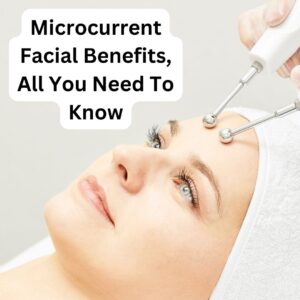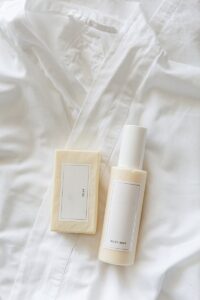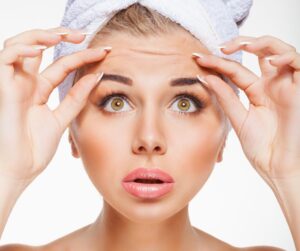Toothpaste on pimples overnight—it’s a DIY skincare trick that has circulated for years. But does this common household item truly possess the power to banish pesky pimples while you catch your beauty sleep? The idea is tantalizing, promising a quick and effortless solution to an age-old problem. But before you squeeze that toothpaste tube onto your skin, let’s delve into the science and separate fact from fiction.
In this article, we unravel the mystery behind this widely shared remedy. Prepare to uncover the truth about using toothpaste on pimples overnight and whether it lives up to the hype. The answer might just surprise you.
Can you put toothpaste on a pimple?
As it was said, lots of folks consider that toothpaste containing antibacterial agents may decrease inflammation and dry the zit up. Nevertheless, one ought to be circumspect.
This, however, is only applicable to a few toothpaste brands and formulations. However, the different components in toothpaste, such as fluoride or menthol, can be quite aggressive against the skin, leading to burns or irritations when left on the skin for a prolonged period. However, if you want to give this method a try, then it’s best to put a small amount of white non-gel toothpaste directly on a pimple and wash it after about thirty minutes.
Monitor your skin’s response to this medication and stop using it if, at any point, your pimples become worse or discomfort occurs. It is also very important that you find an appropriate treatment under the guidance of a dermatologist to ensure long-term skin health.
Benefits of toothpaste on pimples overnight
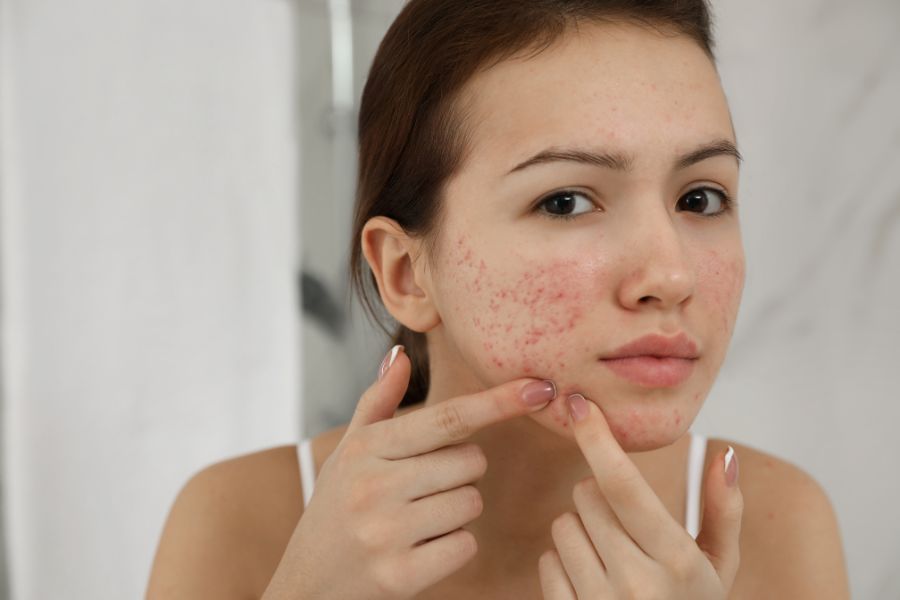
The concept of using toothpaste on pimples overnight has been a long-standing home remedy, often passed down through generations as a quick solution for acne woes. Advocates of this method claim that toothpaste can provide various benefits when applied to pimples. However, it’s essential to weigh the advantages against the potential risks to determine if this popular hack is genuinely effective.
Check out: Homemade Sea Salt Hair Spray
Benefits of Toothpaste on Pimples Overnight:
- Drying Effect: Toothpaste often contains ingredients like baking soda or alcohol, which can help dry out the pimple. This drying effect is believed to reduce the size and redness of the pimple, making it less noticeable.
- Anti-Inflammatory Properties: Some toothpaste formulations contain anti-inflammatory agents like triclosan or hydrogen peroxide, which might help in reducing the inflammation around the pimple. This can lead to decreased swelling and a less irritated appearance.
- Antibacterial Action: Toothpaste generally contains antibacterial agents like menthol, which could potentially kill acne-causing bacteria. By applying toothpaste, some individuals believe they are preventing the pimple from worsening due to a bacterial infection.
- Affordability and Accessibility: One of the significant advantages of using toothpaste on pimples is its affordability and accessibility. Most households have toothpaste readily available, making it a convenient and low-cost option for those seeking quick remedies for their skin issues.
- Psychological Comfort: Applying toothpaste to a pimple might provide a psychological sense of control over the situation. The act of actively doing something about the pimple can offer a feeling of relief and assurance, even if the scientific evidence behind its efficacy is limited.
However, it’s crucial to approach this remedy with caution. Not all toothpaste brands and formulations are suitable for skin application. Some toothpaste varieties contain abrasive ingredients that can damage the skin, leading to irritation and redness. Additionally, leaving toothpaste on the skin for too long or using it frequently can cause dryness and peeling. Therefore, while the benefits of toothpaste on pimples are widely discussed, it’s essential to consider individual skin sensitivities and consult a dermatologist for personalized advice on effective and safe acne treatments.
Related: Face pimples removal tips
Why does toothpaste stop pimples?
The notion that toothpaste can halt pimples in their tracks has been a longstanding belief in the realm of home remedies. Understanding why toothpaste is thought to stop pimples requires delving into its ingredients and their potential effects on the skin.
Why does toothpaste stop pimples?
- Drying Agents: Many toothpaste formulations contain drying agents like baking soda or alcohol. These ingredients can absorb excess oil from the skin, leading to the pimple drying out. This drying effect is believed to reduce the size and visibility of the pimple.
- Antibacterial Properties: Toothpaste often contains antibacterial agents such as menthol or triclosan. These ingredients may help kill bacteria on the skin’s surface, potentially preventing the pimple from worsening due to bacterial infection.
- Anti-inflammatory Components: Some toothpaste varieties contain anti-inflammatory compounds. These components can reduce redness and swelling around the pimple, making it appear less prominent and irritated.
- Menthol Sensation: The cooling sensation that menthol offers in toothpaste can have a momentary numbing effect, relieving the discomfort that some types of pimples cause.
- Psychological Impact: Applying toothpaste to a pimple might provide a psychological sense of control. Taking proactive measures can instill confidence and a feeling of empowerment, even if the scientific evidence supporting their efficacy is limited.
While these factors contribute to the belief in toothpaste as a pimple remedy, it’s important to note that not all toothpaste brands and types are suitable for skin application. Some toothpaste varieties contain abrasive components that can harm the skin, causing irritation and redness. Moreover, individual skin types and sensitivities vary, so what works for one person may not be suitable for another. It’s advisable to exercise caution and, if needed, consult a dermatologist for personalized advice on effective and safe acne treatments.
Related: Flaky skin on face that won’t heal, what to do?
How long should you leave toothpaste on pimples?
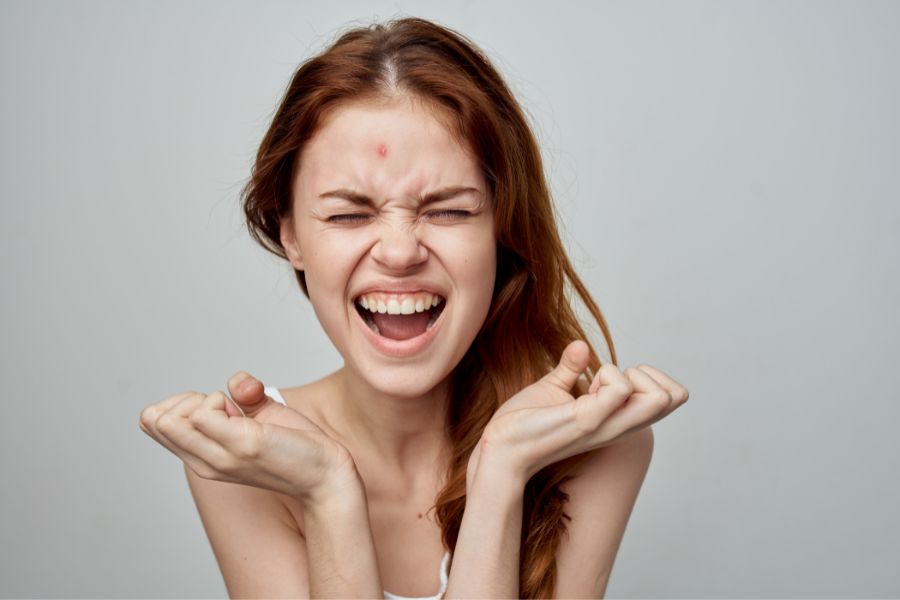
When treating pimples with a paste of toothpaste on spots, it is normally advisable to wash them off within thirty minutes because they are left there longer than that. For instance, a little toothpaste can be applied to the pimple at night before being washed out with water the next day.
Toothpaste exposure may result in skin irritation, inflammation, and overdrying. While applying, it is necessary to watch how your skin reacts and stop using toothpaste as soon as possible when your skin gets irritated.
You should pay attention to how your skin responds, as each person reacts differently; in this case, reduce or increase duration according to one’s skin type or personal reaction. In case there is irritation or the problem persists, one should stop using toothpaste and see a dermatologist for proper medication for acne treatment.
Related: What is Your Skin Type?
Can toothpaste cause side effects if you put it on the skin?
Skin Irritation: Many toothpastes contain irritants such as baking soda or menthol that, when touched on the skin, may produce reddishness or other types of unpleasant skin sensations.
Chemical Sensitivity: For some people, the chemical content of toothpaste may cause an allergic reaction as well as increased sensitivity.
Dryness: Some commercial toothpaste’s ability to dry out zits may be too much of a good thing when it comes to skin. In particular, for those with already naturally dry or sensitive skin, excessive dryness could exacerbate the acne problem.
Peeling: Over prolonged periods of using toothpaste, one can peel off the skin, leading to a thinning of the skin as well as enabling some form of infection or worsening breakouts.
Hyperpigmentation: Sometimes, the strong chemistry present in toothpaste may cause post-inflammation hypopigmentation.
Chemical Burns: Long-term exposure to toothpaste on the skin may lead to chemical burns resulting in pain, redness, and serious instances of blistering.
These potential side effects should be known, and a patch must be done before applying toothpaste to the skin. In case of reaction, stop using them at once with medical help rendered. Nevertheless, it is better to turn to a dermatologist to find suitable acne treatments corresponding to one’s skin type and individual medical needs.
Related: Natural Remedies for Pigmented Skin
What to put on a pimple overnight
Dealing with a sudden pimple overnight can be a distressing experience. Fortunately, there are various remedies and treatments designed to minimize its appearance and promote faster healing. Choosing the right approach can make a significant difference in how quickly a pimple resolves.
What to Put on a Pimple Overnight:
Spot Treatments:
Over-the-counter spot treatments containing benzoyl peroxide, salicylic acid, or sulfur can help reduce inflammation and kill acne-causing bacteria. These treatments are specifically formulated to be applied directly to pimples, aiding in their rapid healing.
Tea Tree Oil:
Known for its natural antibacterial and anti-inflammatory properties, tea tree oil can be diluted with a carrier oil and applied to the pimple. It helps reduce redness and swelling, promoting faster recovery.
Topical Retinoids:
Prescription retinoid creams like tretinoin can be applied to individual pimples as a spot treatment. Retinoids unclog pores, prevent new acne formations, and promote skin cell turnover, aiding in pimple resolution.
Related: Does Chamomile Tea Make You Sleepy? The Shocking Truth
Hydrocolloid Bandages:
These adhesive bandages absorb excess fluid, protect the pimple from external bacteria, and create a moist environment that accelerates healing. They are especially useful for pimples with pus or a visible whitehead.
Aloe Vera Gel:
Aloe vera has anti-inflammatory and antimicrobial properties, making it effective in reducing pimple redness and promoting skin healing. Applying a thin layer of pure aloe vera gel directly to the pimple can soothe irritation and expedite recovery.
Ice Compress:
Applying a wrapped ice cube or a cold compress to the pimple for a few minutes can reduce swelling and redness. It constricts blood vessels, making the pimple less noticeable and less painful.
Non-comedogenic moisturizers: Keeping the skin well-moisturized, especially when using acne treatments, prevents excessive dryness. Opt for non-comedogenic, oil-free moisturizers to hydrate the skin without clogging pores.
Conclusion
In conclusion, the quest to regrow a hairline is a journey many embark upon with hope and determination. Understanding the various methods and treatments available, from specialized shampoos to advanced medical procedures, is crucial.
Each individual’s experience with regrowing their hairline can vary, making it essential to explore different options and consult with experts in the field. While regrowing a hairline is a multifaceted process, it’s heartening to know that advancements in science and technology continue to offer promising solutions. By staying informed, seeking professional guidance, and remaining patient, individuals can navigate this path with confidence.
Remember, regrowing a hairline is a personal and unique experience, and finding the right approach tailored to individual needs is key to achieving the desired results.


